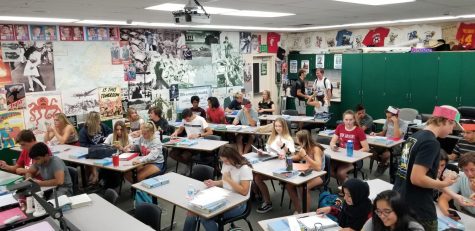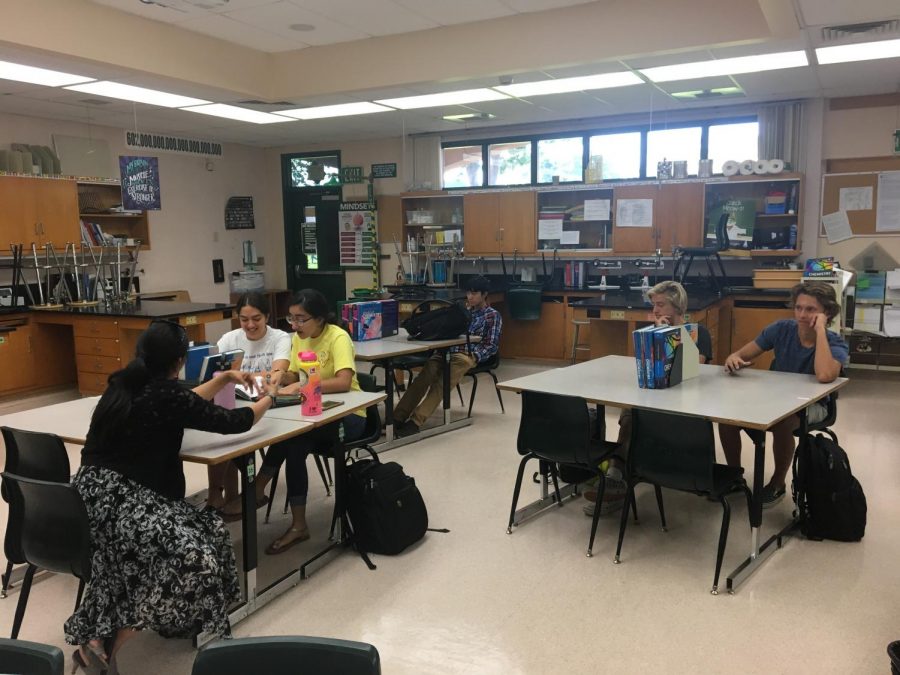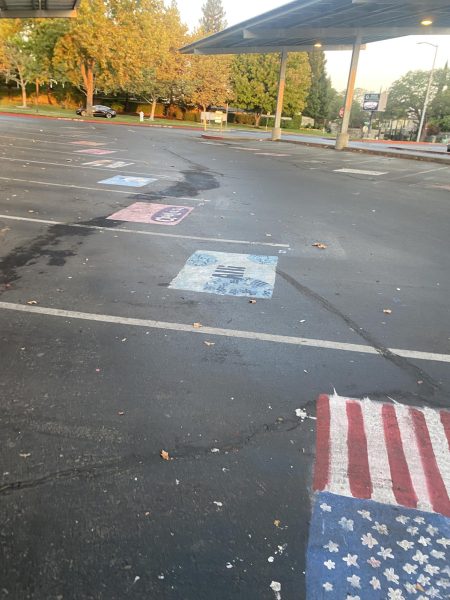IB class sizes remain significantly smaller than AP classes
Advanced Placement classes are overwhelmed with student enrollment in comparison to the International Baccalaureate numbers
IB Chemistry-HL has only seven students, a startlingly low number in comparison to AP US History, which has upwards of 35 students.
Granite Bay High School students have branched out into different academic paths since the beginning of Grizzly history – however, in recent years, these differences have changed the reality of student learning.
For example, the International Baccalaureate (IB) program provides students with learning opportunities beyond typical academic growth, allowing students to develop important skills necessary throughout their entire life.
Although the fast-paced Advanced Placement (AP) and College Preparatory programs offered at GBHS also benefit students in remarkable ways, their class sizes differ from those of IB courses, posing new questions about the discrepancies between the unique paths students choose to take.
Bernadette Cranmer, the school’s IB program coordinator, said there have been significant changes in IB enrollment numbers in recent years.
“(A) few years ago, there might have been, let’s say, 80 students that would take one IB class,” Cranmer said. “Now, there are about 170 students.”
The school has seen a dramatic growth in the number of students enrolled in a particular IB class, but many faculty members still hope the number of students enrolled in the IB Diploma program will grow.
Class sizes in IB and AP courses are not entirely dependent on enrollment itself, however. Students’ perceptions about each program and personal learning preferences play a role when deciding which academic path to take.
IB student Sahar Alaei said the IB diploma program’s reputation was a key part of her decision to enroll in IB courses.
“I heard that IB was a very good program,” she said. “You (have) a lot of one-on-one time with (teachers). I found that is very beneficial.”
Cranmer said IB students benefit from the smaller class sizes and more engaging style of teaching.
“(In the IB program), you’re having time to develop a relationship with the teacher, (an) understanding of the curriculum, and relationships with your peers,” Cranmer said. “That’s definitely an advantage because in that class size, no one’s getting overlooked.”
In comparison to IB courses, AP classes tend to have more students in them. For example, IB Chemistry HL-1 has an average of eight students enrolled, while AP Chemistry averages 31 students.

AP US History is a popular class, and each period has an abundance of students. This term’s third period class has around 41 students enrolled.
AP Chemistry and IB Chemistry teacher Suchi Krishnaraj said she definitely has preferences when it comes to ideal class size.
“Any number below 25 would be (OK),” Krishnaraj said. “It’s a manageable number in terms of research projects and grading. (It) also brings more perspectives to the curriculum.”
Krishnaraj also said there are minor but not insignificant effects of class size on the quality of student learning and teacher satisfaction.
“Students take (IB or AP courses) for different reasons,” she said. “(The) duration is very different (one term for AP versus two years for IB). The scope of the curriculum is different, the labs are very different and the overall goal of these two courses (is) very different. Class sizes are a very minor factor in this.”
So, how do these differences between academic paths affect GBHS students?
Eric Antonio, a junior enrolled in both IB and AP courses, said he prefers IB classes over AP.
“Slowing down to learn the material thoroughly gives me the chance to really take in the information … through a psychological perspective, (and) helps me retain that information for future use,” Antonio said.
It is clear that differences between IB and AP class sizes pose questions about the truth behind student learning. However, if one of these stellar programs were to vanish from the campus, students and teachers would face troubling outcomes.
“We are looking at how can we help people understand the benefits of IB,” Cranmer said. “Because right now, a lot of students (are) missing out. (Students) really could be having an excellent personal and academic experience.”

Mareesa, a senior, is one of the editors-in-chief, and this is her second year on the Gazette staff.














